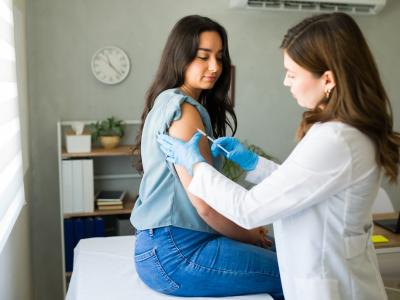Study finds MRSA, other resistant pathogens in Finnish hedgehogs
Testing conducted on hedgehogs in Helsinki, Finland, revealed the presence of antibiotic-resistant pathogens and genes known to cause human infections, according to a paper to be presented at the upcoming European Congress of Clinical Microbiology & Infectious Diseases (ECCMID).
In the study, researchers from the University of Helsinki tested samples from 115 dead hedgehogs collected from a wild animal hospital in Helsinki for the presence of methicillin-resistant Staphylococcus aureus (MRSA) and extended-spectrum beta-lactamase–producing Enterobacterales (ESBL-E). Previous studies have found European hedgehogs to be carriers of these pathogens, including a study published earlier this year that indicated hedgehogs may be a reservoir for livestock-associated MRSA strains.
MRSA was isolated from 10% (11 of 115) and ESBL-E from 9% (10/115) of the hedgehog samples, with four hedgehogs carrying a strain (mecA-MRSA) that causes most clinical infections in Finland and a clone (t304/ST6) that has been emerging in humans in northern Europe. Three hedgehogs carried mecC-MRSA, a livestock-associated MRSA strain that's been found in hedgehogs in Sweden and Denmark.
"This is the first report of the successful t304/ST6 clone (with the capability of global spread) in urban hedgehogs and underscores the need for additional monitoring of possible t304/ST6 sources and its spread in urban environments," study author Venla Johansson, PhD, said in an ECCMID press release. "However, the clinical importance of the zoonotic potential, or whether mecA-MRSA in hedgehogs are of clinical concern to the animals themselves, is not known."
The ESBL-E isolates were found to carry two of the most common ESBL genes (blaCTX-M-1 and blaCTX-M-15) encountered in human and animal isolates. The researchers also found two human-associated sequence types (ST68 and ST69) in ESBL-producing Escherichia coli isolates.
Johansson and her colleagues say the findings could indicate a spillover of antimicrobial resistance (AMR) from anthropogenic sources to hedgehogs and other species of urban wildlife, which could become a secondary reservoir for clinically relevant pathogens. They sug gest hedgehogs should be monitored in different environments and a wider geographic context to determine whether they could act as an AMR sentinel.
Apr 21 ECCMID abstract
Apr 21 ECCMID press release
High prevalence of resistant Pseudomonas in European ICUs
Analysis of Pseudomonas aeruginosa isolates from intensive care units (ICUs) in 11 European countries found a high prevalence of antibiotic resistance, with wide inter-country variability driven by high-risk clones, researchers reported today in the Journal of Antimicrobial Chemotherapy.
A total of 723 isolates from respiratory samples or perianal swabs of 402 patients in 29 European hospitals were studied as part of ASPIRE-ICU, a prospective cohort study that aimed to determine the susceptibility profiles and resistome of P aeruginosa isolates. Researchers assessed resistance against a panel of 12 antipseudomonal agents, used phenotypic and genetic assays to determine the presence of resistance genes, and conducted whole-genome sequencing on the first respiratory isolates from 105 patients.
All agents except colistin and amikacin showed resistance rates above 20%, including the novel antipseudomonal combination drugs ceftolozane/tazobactam and ceftazidime/avibactam. Up to 32.9% of the isolates were multidrug-resistant (MDR), 24.9% were extensively drug-resistant (XDR), 13.2% were classified as difficult-to-treat resistance (DTR), and 0.9% were pan-drug resistant (PDR); 21.4% produced ESBLs or carbapenemases.
The prevalence of the XDR phenotype was highest in hospitals in Serbia (62.5%), followed by those in Hungary (35.3%), Bulgaria (27.5%), and the Czech Republic (15.8%). No XDR isolates were found in isolates from the United Kingdom, Germany, Turkey, or Estonia.
WGS showed that the high-risk P aeruginosa clone ST235 was strongly associated with MDR/XDR/PDR profiles and was frequently detected in Serbian facilities. WGS also revealed a wide repertoire of mutation-driven resistance mechanisms, with multiple lineage-specific mutations.
The analysis also found evidence of a clear tendency towards increased resistance during the course of colonization and infection.
The study authors say the findings highlight the need to reinforce infection-control measures.
Apr 22 J Antimicrob Chemother abstract















